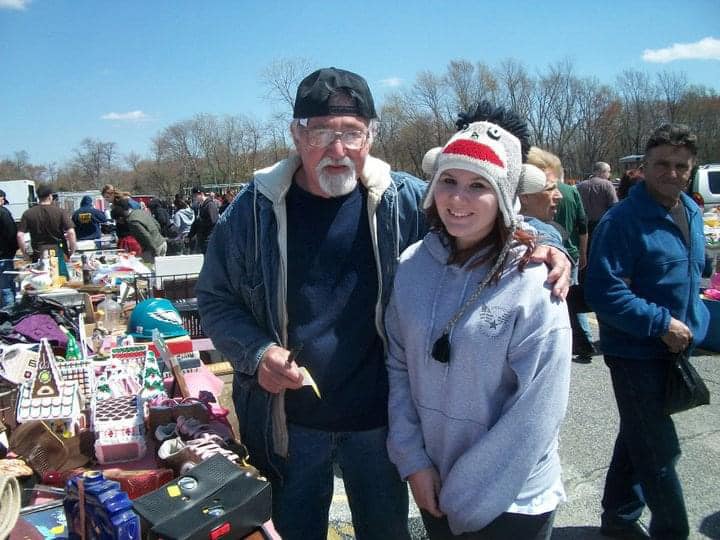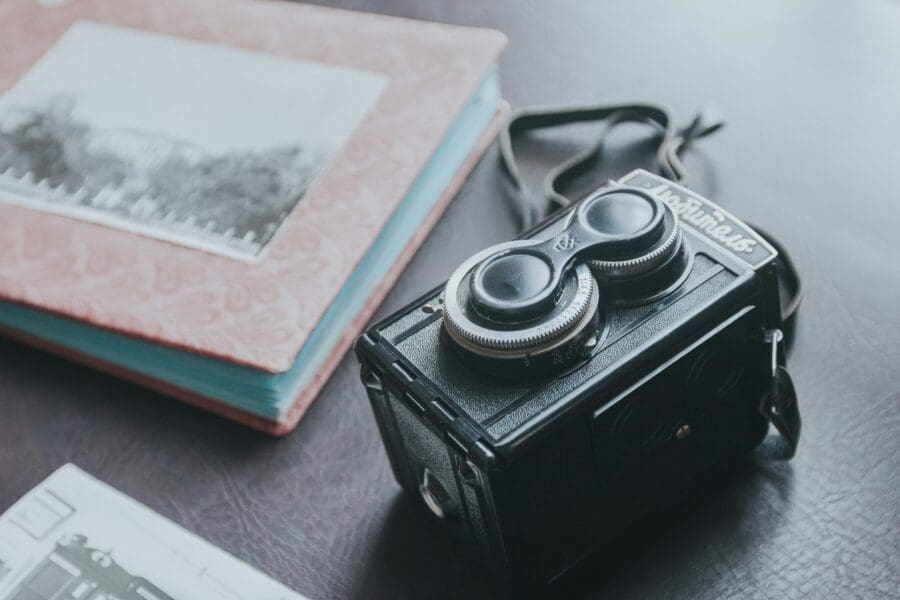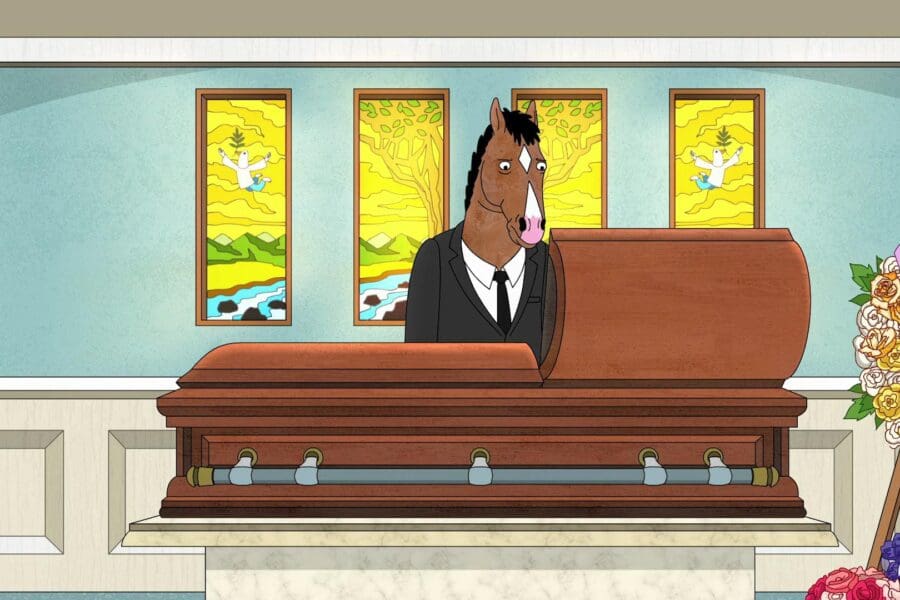But I Found True Value in the Items I Least Expected
With a father as an antique reseller, our house often doubled as a storage facility — even into adulthood. My Dad branded himself as Alfonse Antiques & Furniture. He’d bring home chandeliers to take apart, lampshade frames that needed fabric, eclectic artwork, and desks or bedroom sets that needed refinishing. His sales pitch to clients looking to downsize: “You don’t NEED IT! You don’t USE IT! You Trip OVER IT! You don’t WANT IT! You don’t even LIKE IT!” While he preached this to make a sale, there was a disconnect between what he said and how we “lived” our day-to-day lives.
Funny, his sales pitch to clients was the same argument I made when trying to downsize after he died. I didn’t need it. I wouldn’t use it. I did, indeed, trip over a lot of it. I didn’t like it, but did I want it? Oh, desperately. After all, these items were a piece of my Dad. They told stories of which memories that were made.
What Am I Going to Do With All This…Stuff?
While I wanted to keep all his inventory, the reality of what I needed to do was different. I was in a mad dash to clear out my parents’ house once my dad died. Regardless of the warm and fuzzy feelings the house and his belongings (both personal and for business) gave me, I couldn’t financially swing two monthly payments and two sets of utility bills. It’s sad, isn’t it— how big a part a person’s finances play in the aftermath of death? In one moment, I am considering how I want to preserve my dad’s ashes and being upsold a ring I may rarely, if ever wear (spending way more than I planned) and in the next, having to face the reality of the physical aspects of what I need vs. want to get go of.
Regardless, after several months of avoiding what needed to be done and safely ensuring my ring that held some of my dad’s ashes was safely secured in my jewelry box, I had to reconnect with reality. I wasn’t in a position to continue to pay for a house that sat empty, so to get it ready for the market, I had to commit to clearing it out. This was kind of a tall order.
See, my parents weren’t just hoarders. They were hoarders to the nth degree. No, they would have never been featured on TLC, but they hoarded in case of emergency. They didn’t have to worry if they were ever audited because they had tax records dating back to 1996 (for reference, my dad died in 2022). If the statute of limitations on filing a medical malpractice claim ever expanded to 20 years, my records from Voorhees, Wilmington, and Philadelphia would have finally become useful. The same concept applied to his business inventory – the more he stockpiled, the less he had to worry about his financial future or, worse, face instability.
In the months before he died, we’d talk about the house and what I would do with it. As the obstinate daughter, I quickly shut down the conversation. But credit to my father, he raged on, instructing me on how to hold an estate sale. After all, a lifetime of antiquing meant that everything in the house should be worth something.
Time didn’t allow me to be the estate sale expert I feel he would have wanted me to be. Sadly, I found myself letting go of things for much less than they should have been worth.
The Pressure to Downsize
Quite honestly, a lot of the pressure to downsize — and downsize quickly — came down to time. So when I found myself selling our $1,000 dining room table for $100 bucks and the artwork he’d collected over the years between $5-10, I didn’t just feel like the biggest traitor. I felt like a downright disappointment. I’ve been living in Florida for what will be a year in two weeks, and it still feels like yesterday that I was watching two strapping men carry my couch onto a moving truck.
My point is that time goes by fast, and time never moves as slowly and deceptively quickly as it does in the months following a death. Family came over to help, asking the obvious question, “What are you going to do with this?” That first question was in response to a box of tiles my dad listed on eBay. I didn’t know what I would do with it, but that didn’t mean I was ready to donate or trash it.
It was the first of many times that the question popped up, and the less I could answer, the less interest people had in helping me out. This just made the whole downsizing process last even longer.
Everything had meaning in my eyes, which meant that I didn’t know where to start. And, truthfully, the more people tried to force me into deciding what to keep and what to let go of, only made downsizing worse. It’s like being told you need to cut either the red or blue wire. One wrong choice and it’s all over. That’s how it felt. I could donate my dad’s sweatshirts, but what if I changed my mind? Once those sweatshirts left my hand, there was no going back.
Needless to say, I had a hard time dealing with that — especially considering he had been dead just shy of two months. So I did what any grieving daughter would do — I made choices, that in hindsight, now I’d probably tackle differently. Regardless, I learned some important lessons about this whole downsizing-after-death thing.
Lessons Learned
In the four months following his death, I held two estate sales and had seven junk removal appointments. I stayed home, not able to bear witness to the picture frames, boxes of lamp crystals, or my dad’s recliner tossed into the back of a garbage truck and hauled away like they were trash, especially the recliner. It was worn down, maybe. But not trash.
It’s surreal to think about, actually. I had bought that recliner for my dad six years earlier. He had been wanting one, and Ollie’s was selling some for $250 on Black Friday. My husband and I woke up early and were the first ones in line. Assuming they’d sell out quickly, we raced to the back of the store where they only had about four or five available, and at least 10 people eyeing them up.
When we gave it to him on Christmas morning, he was elated! There are so many mental pictures I hold of him sitting in that recliner watching the King of Queens, laughing with my mom, or with Gray Cat (yes, that is his actual name) resting on his shoulders. When he was sick, it became his bed, and he had to sleep sitting up due to his esophageal cancer. Over time, it withered away with him. I didn’t want to see him die, but I did. I didn’t want to add seeing the recliner hauled away to that list.
I think this last bit is what I want to remind anyone reading this. In the aftermath of death and the face of grief, everyone’s giving you advice. However, it’s important to remember that what worked for them may not work for you. After my mom died, I flew into a rage that my dad wanted to sell her dolls from her childhood. “You have a whole room of eBay stuff,” I screamed, running out the front door to get some air. My only thought was, how could he want to get rid of things that were hers?
When our hot heads finally cooled, he said the items only belonging to her made him uncomfortable, as they brought up too many sad memories. It was the items they shared that brought him joy, whereas, to me, his wish to get rid of personal items felt like she was being erased. When someone’s pressuring you to let go of things, sometimes waiting until cooler heads prevail is how you find a resolution. People will understand your viewpoint if you just communicate it to them.
At the end of the day, downsizing is an incredibly difficult and emotionally charged process. When I think back to how much I own now, it’s probably considered a lot by other people’s standards. Do I need a box of my mom’s scarves? No, but seeing them brings me joy. When I wrap one around my neck, I still get whiffs of her perfume. When I use my dad’s paintbrush, it feels like I’m continuing an old family tradition. His creativity flows through me. That, in itself, brings joy, and it keeps him alive. Though the items he collected for a living had value, it was the personal items — the things he used every day that had the biggest impact on me. Sure, I still kept a painting — or two. After all, once an antiquer’s daughter, always an antiquer’s daughter. And I will forever be proud of that.
The bottom line: don’t pressure yourself to downsize before you’re ready. Just like everything else in life, you’ll know when it’s time. It’s kind of like a balancing act. Despite being constricted by both time and money, I still had to make decisions about what had to be let go of and when. Take the recliner, for example. I didn’t want to get rid of it, but I also knew I was never going to use it. I also knew that it was too beat up to sell or donate elsewhere. There were many times throughout this process that I had to make a decision based on logistics rather than emotions, and when I finally reached the bottom line, I knew it was time to bid my farewells and let it go.
Other items — his personal belongings — took time and quite honestly, I’m still in the process of downsizing. More recently, I donated some of his drawings to a local cafe to be displayed (and hopefully) sold. I don’t want to get rid of them, but I also don’t want to keep him all to myself. That’s been another helpful realization throughout all of this — that when I downsize, I’m giving someone else a chance to love the items he loved. I get to give those items new life.
It may sound cliche, of course, but sometimes downsizing is a balancing act between necessity and want — and at the end of the day, you should be the one to decide what that looks like. That’s the only way you’ll ever move through this.








Leave a Comment